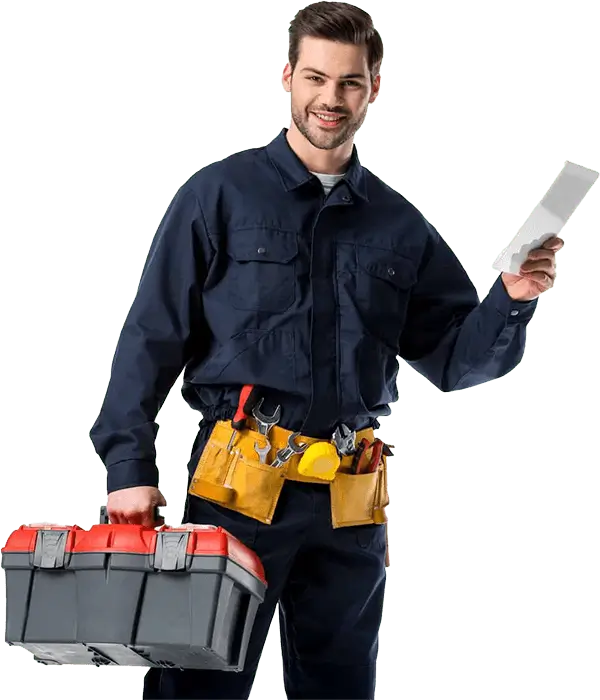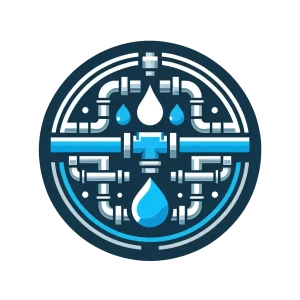DIY Plumbing Projects for Homeowners in Your City
Discover effective and DIY clogged drain solutions and faucet repair tips that every homeowner should know. Learn about the essential plumbing basics to save time, money and prevent future issues.
Identifying Common Causes of Clogged Drains
Clogged drains are a common issue that many homeowners face, often leading to frustration and inconvenience. Identifying the root cause of a clogged drain is the first step toward finding effective clogged drain solutions. One of the most frequent culprits is hair and soap scum, which can accumulate over time in bathroom sinks and showers. Grease and oil from cooking can also solidify in pipes, creating blockages that are difficult to remove. Food particles, especially in kitchen drains, can buildup and cause slow drainage or complete blockages.
Another common cause of clogged drains is mineral buildup, particularly in hard water areas. Minerals like calcium and magnesium can form scale inside pipes, reducing their diameter and slowing the flow of water. Tree roots can also invade older or damaged pipes, leading to severe clogs and potential leaks. Additionally, broken or cracked pipes can trap debris, further exacerbating drainage issues.
To prevent these problems, homeowners should adopt regular maintenance routines. Installing drain screens can help catch hair and debris before they enter the pipes. Proper disposal of grease and oil, rather than pouring them down the drain, is essential to avoid buildup. For faucet repair tips, inspecting for leaks or mineral deposits around faucet fixtures can prevent future issues.
Understanding basic plumbing concepts like pipe layout and water flow can empower homeowners with diy plumbing basics. Regularly cleaning drains with natural solutions, such as baking soda and vinegar, can dissolve minor blockages before they become serious. By addressing these causes early, homeowners can maintain efficient drainage systems and avoid costly professional interventions.
Safe and Effective Drain Cleaning Methods
When dealing with clogged drains, it’s essential to adopt safe and effective methods to avoid causing further damage or harming the environment. After identifying common causes like hair, soap scum, grease, and food waste, the next step is to tackle the issue head-on using tried-and-true techniques. One of the most reliable clogged drain solutions is a simple yet powerful combination of baking soda and vinegar. Pouring half a cup of baking soda followed by half a cup of white vinegar into the drain creates a chemical reaction that breaks down blockages over time. Letting this mixture sit for 15–30 minutes before flushing with hot water can often clear minor clogs effectively.
For tougher buildup, especially from grease or oil, boiling water can be an excellent DIY plumbing tool. Pouring boiling water down the drain helps dissolve fatty residues and flushes out debris. However, it’s important to exercise caution when using boiling water, as it can damage certain types of pipes if used excessively.
Another effective method involves using a mechanical drain snake, which is a must-have tool for any homeowner tackling clogged drains. These devices allow you to physically remove blockages from the drain without resorting to harsh chemicals or invasive pipe work. Start by inserting the snake into the drain and twisting it carefully until resistance is felt, then pull out the debris.
For those who prefer chemical-free solutions, enzymatic cleaners are a great alternative. These products use naturally occurring bacteria to break down organic matter in drains, making them safe for septic systems and environmentally friendly.
In addition to these methods, maintaining regular upkeep can prevent future clogs. Installing drain screens or traps to catch debris before it enters the pipes is a simple yet effective preventative measure. Regularly cleaning hair and gunk from bathroom drains and using garbage disposals wisely (avoiding non-compostable items) can also extend the life of your plumbing system.
When attempting any DIY plumbing project, always prioritize safety by wearing gloves and ensuring proper ventilation. If a clog persists or you suspect damage to the pipes, it’s wise to call in a professional to avoid further complications. By combining these strategies, homeowners can keep their drains flowing smoothly while mastering basic faucet repair tips and other essential plumbing skills for their homes.
Troubleshooting Leaky Faucets: Step-by-Step Guide
When dealing with a leaky faucet, it’s important to approach the problem methodically to ensure effective repair. Start by identifying the type of faucet you have—compression, cartridge, ball, or ceramic disc—as this will guide your repair steps. Begin by turning off the water supply to the faucet to prevent any accidents or further damage. Once the water is shut off, carefully disassemble the faucet, starting with the handle and moving inward to inspect the internal components.
Common causes of leaks include worn-out washers, damaged O-rings, or corroded valve seats. If you find any of these parts degraded, replace them with new ones of the same size and type. For compression-style faucets, ensure the washer is seated properly and free from nicks. In cartridge or ball-type faucets, inspect for mineral buildup or wear on the moving parts. Ceramic disc faucets may require replacing the entire assembly if cracks are present.
When reassembling, apply plumber’s grease to new washers and O-rings to create a better seal. Test the faucet after reassembly by turning on the water slowly and checking for leaks. If the leak persists, double-check your connections or consider consulting a professional if the issue is beyond basic DIY plumbing basics.
In addition to fixing leaks, addressing minor faucet issues early can prevent more extensive damage down the line. Regular inspections and simple maintenance are key to keeping your plumbing system in good working order. By mastering these faucet repair tips, homeowners can save money and maintain their home’s functionality without relying on costly repairs or professional interventions.
Preventing Future Clogged Drains & Leaky Faucets
Preventing future clogged drains and leaky faucets requires a combination of regular maintenance and proactive measures. By addressing potential issues before they become major problems, homeowners can save time, money, and frustration. For , one of the most effective strategies is to prevent debris from accumulating in the first place. Avoid flushing non-degradable items like grease, food particles, or hygiene products down your drains. Instead, use drain screens to catch debris and clean them regularly. Over time, mineral buildup can also cause clogs, so treating your pipes with a mixture of baking soda and vinegar can help keep them clear.
For , regular inspections are key. Check the O-rings and washers under the handles for wear and tear, as these are common culprits for leaks. Tightening connections or replacing worn-out parts can prevent minor drips from turning into major leaks. Additionally, monitor your faucet’s flow rate—sudden changes could indicate an issue that needs attention before it worsens.
Incorporating into your routine maintenance can significantly extend the life of your plumbing system. This includes keeping essential tools like pliers, adjustable wrenches, and a drain snake handy for quick fixes. By staying vigilant and addressing small issues promptly, you can avoid costly repairs and ensure that your home’s plumbing remains in top condition. Remember, prevention is always easier—and cheaper—than fixing problems after they’ve developed.
DIY Plumbing Basics: Tools & Equipment
When tackling DIY plumbing projects, having the right tools and equipment is essential for success. Whether you’re dealing with a clogged drain or a leaky faucet, knowing which tools to use can save time and frustration. Start by gathering basic tools like pliers, adjustable wrenches, and screwdrivers, as these are versatile for various tasks. For , a drain snake or auger is indispensable—it helps remove debris without causing damage. A plunging kit is also useful, especially for minor blockages in sinks or toilets.
When it comes to , having a set of Allen keys and replacement washers can be game-changers. Faucets often fail due to worn-out O-rings or cartridges, so keeping these parts on hand is wise. A multimeter might seem advanced, but it’s helpful for diagnosing electrical issues in modern fixtures. Additionally, a bucket and towels are essential for catching water during repairs.
For , learning how to shut off your home’s main water supply is crucial before starting any project. Familiarize yourself with the location of valves and practice turning them off and on. Using pipe dope or Teflon tape ensures leak-free connections when tightening fittings. Remember, even simple fixes can become complicated if you lack the right tools or skills.
While these basics cover many common issues, it’s important to recognize when a problem exceeds your capabilities. If you encounter recurring clogs or leaks that won’t stop, it might be time to consult a professional plumber. Balancing DIY efforts with knowing your limits ensures safety and efficiency in your plumbing projects.
When To Call A Professional Plumber
When To Call A Professional Plumber
While many homeowners can tackle basic plumbing tasks using DIY clogged drain solutions and faucet repair tips, there are situations where professional expertise is essential. Understanding when to call a plumber can save time, money, and prevent potential disasters.
Persistent Clogged Drains: If your efforts with plungers, drain snakes, or chemical treatments haven’t resolved the issue, it might indicate a more serious problem like tree roots invading pipes or blockages in the main sewer line. These scenarios often require advanced tools and techniques that only professionals possess.
Complex Faucet Repairs: Basic faucet issues, such as leaks from worn washers or loose connections, can usually be fixed with DIY skills. However, problems involving intricate mechanisms, like faulty cartridges or unusual noises, may need a professional’s expertise to avoid further damage.
Severe Leaks: When leaks are persistent and hard to control, especially if they’re in hard-to-reach areas like behind walls or under sinks, contacting a plumber is crucial. They can address the issue safely and effectively before it causes significant water damage or structural harm.
Gas Line Issues: Any problem related to gas lines should immediately prompt a call to a professional. DIY attempts here are extremely dangerous, as even minor mistakes can lead to leaks, fires, or explosions.
Knowing your limits is key. While DIY plumbing basics are valuable, recognizing when to seek help ensures safety and prevents small issues from escalating into major problems. Remember, the goal is to maintain functionality and safety in your home, and sometimes that means trusting a professional.
Frequently Asked Questions About Clogged Drains & Faucet Repair
When dealing with clogged drains and faucet repairs, many homeowners wonder where to start. Here are some and that can help you address these issues effectively while building your skills.
For clogged drains, the first step is often prevention. Regularly clean hair, grease, or debris from drains to avoid buildup. If a clog occurs, try using a plunger or drain snake to clear it. For tougher blockages, a mixture of baking soda and vinegar can help dissolve organic matter. Always be cautious with chemical drain cleaners, as they can damage pipes over time.
When it comes to faucet repairs, inspect for common issues like leaks, drips, or slow flow. Check the washer or O-ring under the handle for wear and tear, as these are often culprits for leaks. Tightening connections or replacing faulty parts can restore proper function. If your faucet has a clog, remove the aerator screen to clean out debris.
Mastering starts with understanding tools like adjustable wrenches, pliers, and pipe cleaners. Always turn off water supply before working on pipes or fixtures to avoid accidents. Learning how to shut off valves and use safety gear can make your DIY projects safer and more efficient.
By tackling these issues yourself, you can save money and gain confidence in handling minor plumbing tasks. However, if problems persist—like recurring clogs or complex faucet repairs—it’s best to consult a professional plumber for lasting solutions.
Conclusions
With the right knowledge and tools, you can easily tackle common plumbing issues like clogged drains and leaky faucets. By following these DIY plumbing projects, you’ll save time, money, and prevent future problems. Remember to call a professional plumber when necessary for peace of mind.

